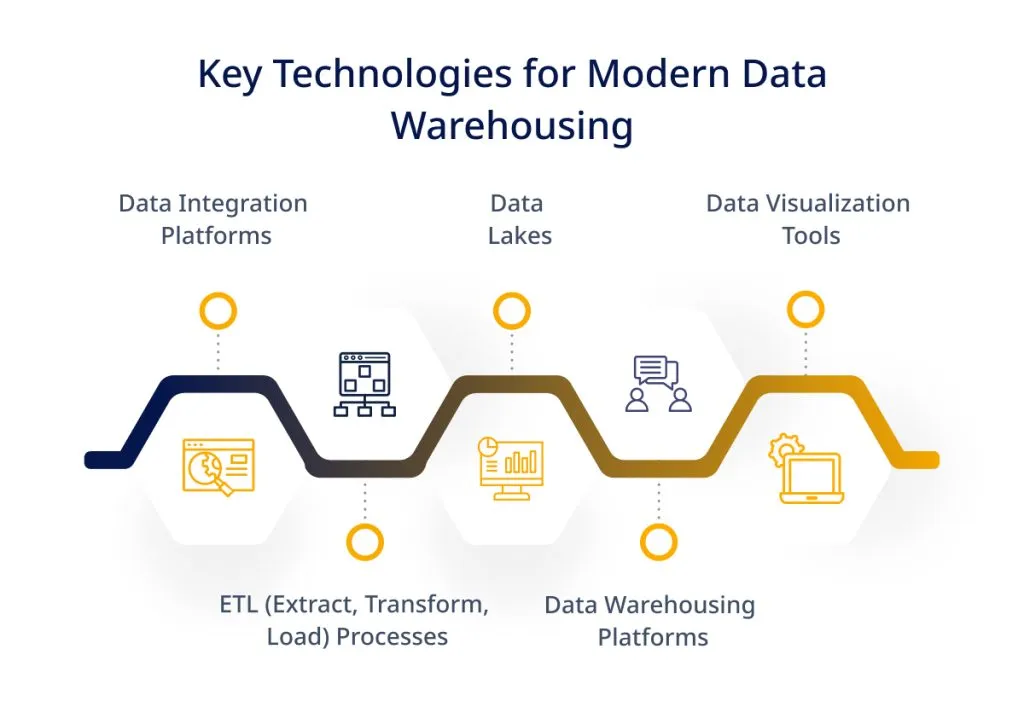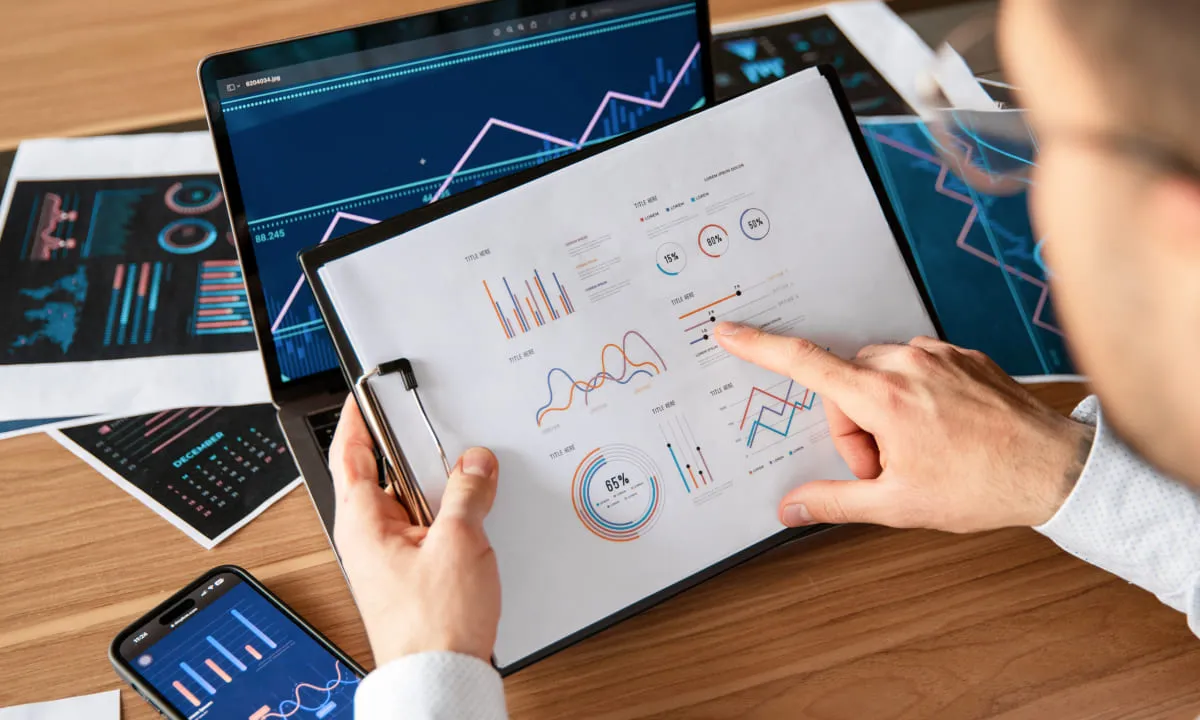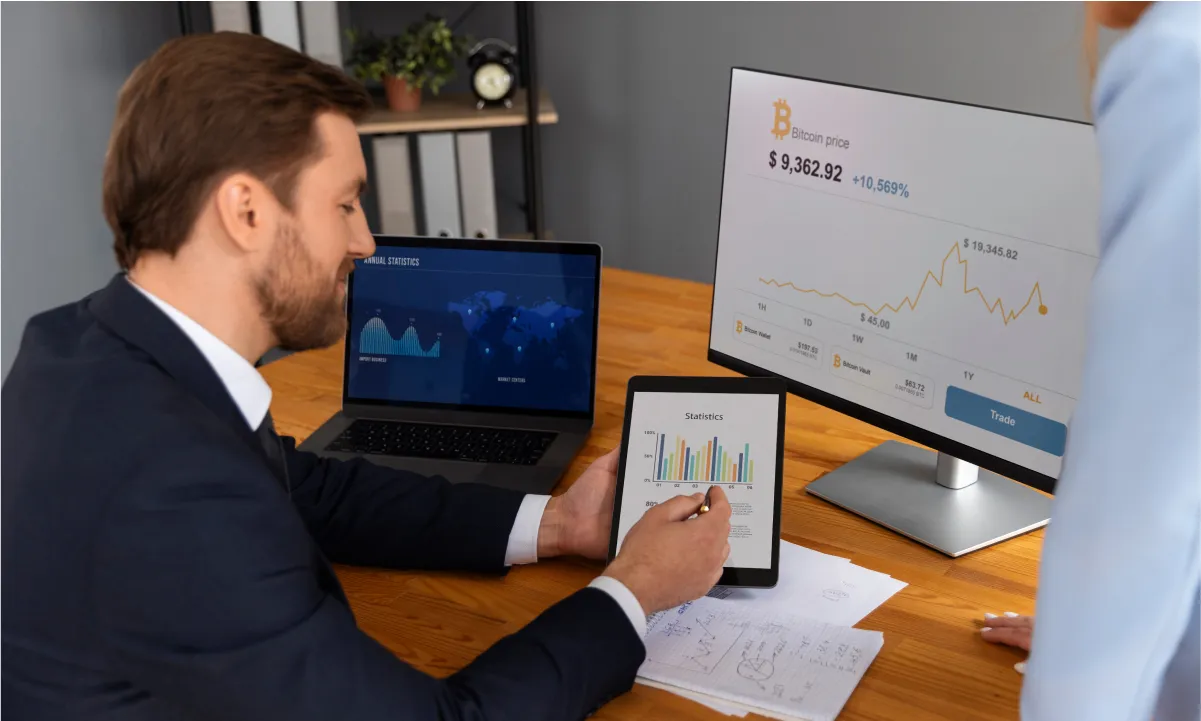The worldwide data is predicted to grow 61% to 175 zettabytes by 2025, stated IDC. Most companies need to transition to a modern cloud data warehouse.
Leading cloud providers like AWS and GCP offer managed solutions that are way more powerful, flexible, and convenient than what traditional warehouses can deliver.
This market is booming already, expected to top 30 billion dollars in the next few years.
A Statista report stated that the cloud data warehousing market has already exceeded $10 billion and is estimated to reach 472.47 billion U.S. dollars by 2030, with a forecast compound annual growth rate of around 23 percent.
But moving all your data and analytics to the cloud takes thoughtful planning and happens gradually through phases.
In this guide, we’ll map what companies need to think through to upgrade their warehouse: assessing your current situation, picking the right cloud technology, figuring out data migration, and ensuring people adopt the new tools – we’ve got you covered.
Let’s begin!
The Data Dilemma: Navigating the Maze of Retail Data
In the fast-paced world of retail, your business generates a ton of data. Sales numbers, inventory updates, customer transactions – it’s like a data avalanche.
But here’s the problem: this data often lives in different places and forms, scattered across your business like jigsaw puzzle pieces.
This is the data dilemma, and it’s a big deal for retail companies.
So, why should you care about this?
Let’s keep it simple with real-life examples:
- Data Silos: Think of your customer information in one place, your stock numbers in another, and sales data elsewhere. When you need the full picture, it’s like trying to finish a puzzle when some pieces are missing.
- Slow Insights: If it takes forever to get the data you need, you might not spot significant trends or problems until it’s too late. This can mean missed sales or problems in your operations.
- Hard Decisions: When you have to make choices based on data, you need that data at your fingertips. If it’s stuck in different places, making decisions becomes way harder than it needs to be.
The data dilemma slows you down when using data to make intelligent choices. But don’t worry, we’re here to help you navigate it and get the most out of your data.
We ensure a smooth transition to a modernized data warehouse
Why Modernize Your Data Warehouse?
Modernizing your data warehouse isn’t just a tech buzzword; it’s a game-changer for your retail business.
Businesses are actively seeking data warehouse solutions for their projects. Here’s why you should care:
- Gain Better Insights: It’s tough to see the big picture when your data is everywhere. Modernization brings your data together, helping you easily spot trends, customer preferences, and market shifts.
- Cut Costs: Old data warehouses can be expensive to maintain. Modernization often means moving to the cloud, which can be more cost-effective, as you pay only for what you use.
- React Faster: Modern tools allow you to access and analyze data in real time. That means you can react swiftly to changing market conditions and customer needs.
- Scale Up: As your business grows, so does your data. Modernization makes it easier to scale your data warehouse, ensuring it can handle increased data loads without breaking a sweat.
- Improve Decision-Making: When your data is up-to-date and accessible, you can make smarter decisions. Whether stocking the right products or targeting customers, data-driven choices lead to better outcomes.
- Stay Competitive: The competition is fierce in today’s retail landscape. Modernization can give you the edge you need to stay ahead of the game.
- Enhance Customer Experience: By understanding your customers better through data, you can personalize their shopping experience, offer relevant products, and boost customer satisfaction.
You can adjust your inventory and marketing strategies accordingly, saving money and boosting sales.
Also Read: Data Science In EdTech: How Giants Are Maximizing Student Retention And Success
A Step-by-step Guide to Data Warehouse Modernization
Step 1: Assessing Your Current Setup
Before modernizing your data warehouse, taking stock of where you stand is essential. Here’s how to do it:
- Data Inventory: Take a good look at all your data. Where is it stored? What kind of data is it? Knowing what you have is the first step.
- Performance Check: How’s your data warehouse performing? Is it slow to retrieve data? Are there bottlenecks that slow things down?
- User Feedback: Ask the folks who use the data warehouse regularly. Are they facing any issues or limitations? Their feedback can be gold.
- Costs Analysis: What’s the price tag for maintaining your current setup? This includes hardware, software, and personnel costs.
- Data Security: How secure is your data? Are you compliant with data protection regulations? Data breaches can be costly in many ways.
This assessment helps you pinpoint these pain points to know exactly where to focus your modernization efforts. Various data warehousing tools will help you do the assessment efficiently without any failure.
Step 2: Setting Clear Objectives
Before beginning Data Warehouse Modernization, setting clear and specific objectives is crucial. This will help your developers in data warehouse architecture as well.
These objectives serve as the compass, guiding you through the entire process. Here’s why they matter and how to set them
Why Objectives Are Important?
- Objectives provide a clear direction and purpose.
- When planning Data Warehouse Modernization, they help you understand your goals, such as improving data quality, enhancing analytics capabilities, or reducing operational costs.
- Clear objectives also allow you to measure progress and success effectively.
Here are the key points to help you set clear goals:
- Assessment: Begin by assessing your current data warehouse. Identify its strengths and weaknesses. Determine what’s lacking or needs improvement.
- Align with Business Goals: Your objectives should align with your organization’s broader business goals. Ask yourself, “How can modernizing our data warehouse support our overall mission?”
- Be Precise: Make your objectives specific and measurable. Instead of saying, “Improve data quality,” say, “Achieve a 20% reduction in data errors within one year.”
- Prioritize: Not all objectives are equally important. Prioritize them based on their impact and feasibility.
- Set a Timeline: Define a timeframe for achieving your objectives. This creates a sense of urgency and accountability. With the support of data analytics services, you can meet your timelines without any failure.
- Regular Review: Review and adjust your objectives to align with changing business needs.
Clear objectives in data warehouse modernization are to provide a roadmap, making informed decisions and measuring easy progress.
Experience tailored solutions that redefine business efficiency and drive competitiveness
Step 3: Building the Right Team for Data Migration: Big Data vs. Business Intelligence
When it comes to Data Warehouse Modernization, assembling the right team is paramount.
Your team will be the driving force behind the success of your project. Any expert data science consulting service company can guide you through dos and don’ts.
Understanding the Needs: Recognize the specific needs of your Data Warehouse Modernization project. Is it more about handling vast amounts of data (Big Data) or focusing on analytics and reporting (Business Intelligence)? Understanding this distinction is crucial.
For Big Data:
- Look for data engineers and scientists who excel in data handling, storage, and processing.
- Hire data architecture and cloud computing experts having good knowledge of infrastructure monitoring tools to manage Big Data.
For Business Intelligence:
- Seek professionals skilled in data analysis, reporting, and visualization.
- Consider data analysts and BI developers who can translate data into actionable insights.
Cross-functional Collaboration: Regardless of the focus, fostering collaboration between both teams is vital. Big Data and Business Intelligence teams should work together to ensure data is stored efficiently and utilized effectively for strategic decision-making.
Building the right team means recognizing the specific requirements of your Data Warehouse Modernization project and bringing together the expertise needed for success, whether it’s in handling Big Data or optimizing Business Intelligence.
Step 4: Selecting the Modernization Approach
Choosing the right approach for Data Warehouse Modernization is pivotal in your data transformation journey.
To make this choice wisely, consider current data warehousing trends and explore top Business Intelligence (BI) implementation services.
- Data Warehousing Trends: Stay ahead of the latest data warehousing trends to inform your approach. For instance, cloud-based data warehousing solutions are gaining popularity due to their scalability and cost-effectiveness. Real-time data processing and analytics are also becoming essential, enabling businesses to make quicker decisions.
- Top BI Implementation Services: Research and identify top BI implementation services. These services offer expertise in setting up and optimizing your Business Intelligence tools. Look for services with a strong data integration, reporting, and analytics track record.
When choosing your data warehouse technology and approach, weigh the benefits of cloud-based solutions, real-time data processing, and the expertise of BI implementation services.
The right approach will depend on your organization’s needs and goals, so thorough research is critical to making an informed decision.
Also Read: 11 Data-Driven Factors That Make Hiring Remote Software Developers A Game-Changer
Step 5: Data Security and Compliance
Data security and compliance are essential to Data Warehouse Modernization, especially as data warehouse scalability and integration services play a pivotal role.
Here’s why it matters and what you need to know.
- Data Warehouse Scalability
As your data warehouse grows, maintaining data security becomes more complex. Scalability often leads to increased data exposure, so implementing robust security measures that adapt to changing data volumes is crucial.
- Data Warehouse Integration Services
When integrating data from various sources, protecting sensitive information is essential. Data integration services should include encryption, access controls, and data masking to prevent unauthorized access.
- Compliance Requirements
Different industries have specific data compliance regulations (e.g., GDPR, HIPAA). It’s imperative to understand and adhere to these regulations. Compliance protects sensitive data and avoids potential legal and financial repercussions.
- Data Auditing and Monitoring
Regularly audit and monitor your data warehouse to detect unusual activities or security breaches. Implementing advanced monitoring tools can help you proactively identify and address security threats.
Data security and compliance are non-negotiable aspects of modernizing your data warehouse.
As your data scales and integrates from various sources, a comprehensive security strategy is essential to protect your data and maintain compliance with relevant regulations.
Harness the power of data-driven decisions to supercharge your success.
Conclusion
Transitioning to a modern cloud data warehouse lets you unlock the full potential of big data through business intelligence.
However, it requires thoughtful planning, phased execution, and continuous optimization.
Organizations willing to invest the time to get it right are rewarded with robust capabilities for managing and analyzing big data to drive business intelligence.
Remember, data warehouse modernization is an evolving process, not a one-time initiative.
As new big data tools and business intelligence techniques emerge, companies must continually assess their architecture and migrate to the next level.
Regularly reviewing your roadmap keeps your organization on the cutting edge of BI – which is increasingly key to competitive advantage.
Take your modernization journey. Follow this guide to assess your environment, identify pain points, model the future state, and build the business case for change.
If you need business intelligence (BI) services support, our team is just one click away to deliver the best results.








